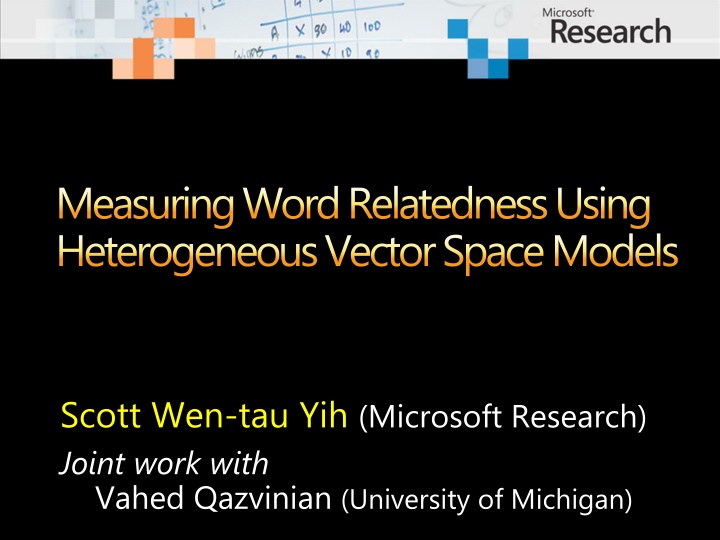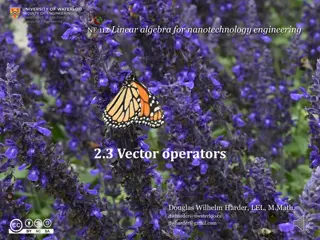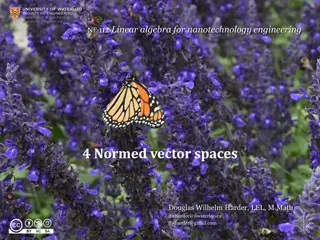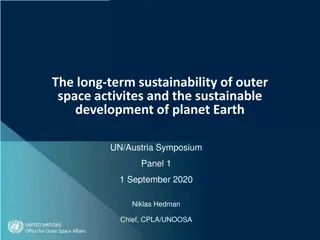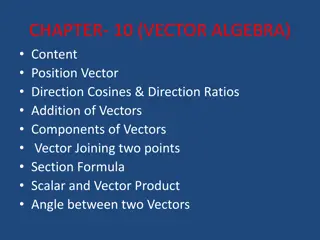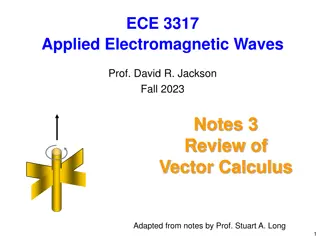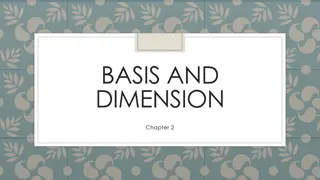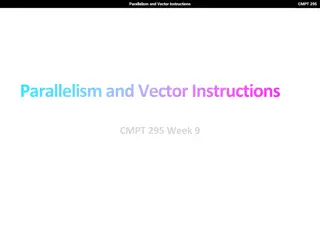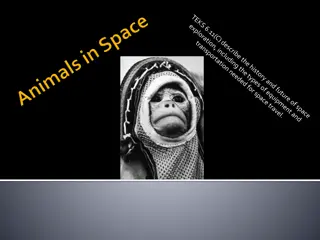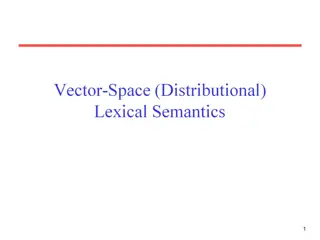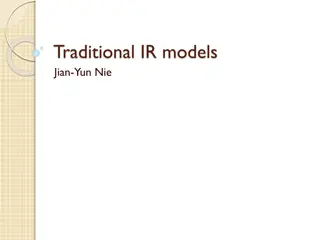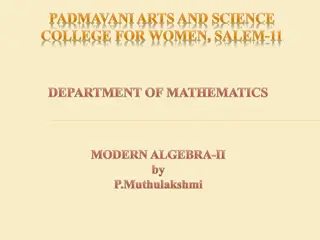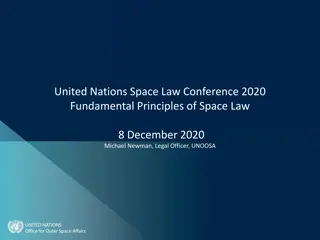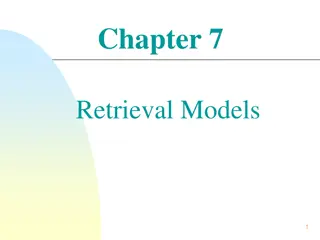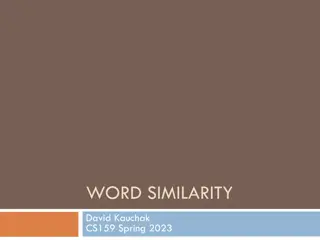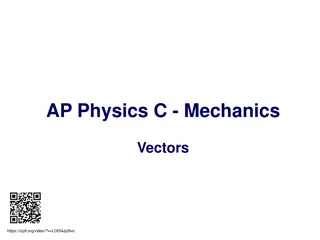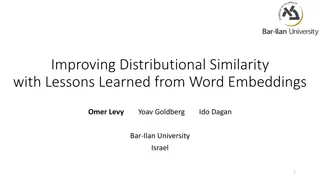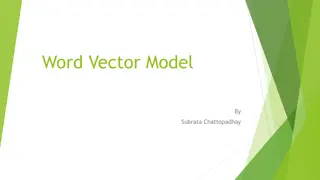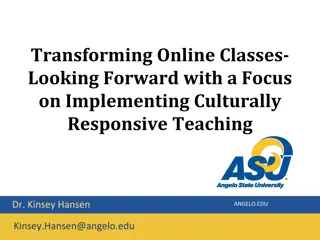Measuring Word Relatedness Using Vector Space Models
This presentation delves into the intricate world of word relatedness through the lens of Heterogeneous Vector Space Models. Learn about measuring semantic word relatedness, sentence completion challenges, and the significance of Vector Space Model in understanding word meaning. Explore the need for multiple VSMs to represent multi-sense words and the implications for text classification and other applications.
Download Presentation

Please find below an Image/Link to download the presentation.
The content on the website is provided AS IS for your information and personal use only. It may not be sold, licensed, or shared on other websites without obtaining consent from the author.If you encounter any issues during the download, it is possible that the publisher has removed the file from their server.
You are allowed to download the files provided on this website for personal or commercial use, subject to the condition that they are used lawfully. All files are the property of their respective owners.
The content on the website is provided AS IS for your information and personal use only. It may not be sold, licensed, or shared on other websites without obtaining consent from the author.
E N D
Presentation Transcript
Measuring Word Relatedness Using Heterogeneous Vector Space Models Scott Wen-tau Yih (Microsoft Research) Joint work with Vahed Qazvinian (University of Michigan)
Measuring Semantic Word Relatedness How related are words movie and popcorn ?
Measuring Semantic Word Relatedness Semantic relatedness covers many word relations, not just similarity [Budanitsky & Hirst 06] Synonymy (noon vs. midday) Antonymy (hot vs. cold) Hypernymy/Hyponymy (Is-A) (wine vs. gin) Meronymy (Part-Of) (finger vs. hand) Functional relation (pencil vs. paper) Other frequent association (drug vs. abuse) Applications Text classification, paraphrase detection/generation, textual entailment,
Sentence Completion (Zweig et al. ACL-2012) The physics professor designed his lectures to avoid ____ the material: his goal was to clarify difficult topics, not make them confusing. (a) theorizing (d) delineating (b) elucidating (e) accosting (c) obfuscating
Sentence Completion (Zweig et al. ACL-2012) The physics professor designed his lectures to avoid ____ the material: his goal was to clarify difficult topics, not make them confusing. (a) theorizing (d) delineating (b) elucidating (e) accosting (c) obfuscating The answer word should be semantically related to some keywords in the sentence.
Vector Space Model Distributional Hypothesis (Harris 54) Words appearing in the same context tend to have similar meaning Basic vector space model (Pereira 93; Lin & Pantel 02) For each target word, create a term vector using the neighboring words in a corpus The semantic relatedness of two words is measured by the cosine score of the corresponding vectors ??? cos( ) ???
Need for Multiple VSMs Representing a multi-sense word (e.g., jaguar) with one vector could be problematic Violating triangle inequality Multi-prototype VSMs (Reisinger & Mooney 10) Sense-specific vectors for each word Discovering senses by clustering contexts Two potential issues in practice Quality depends heavily on the clustering algorithm The corpus may not have enough coverage
OurWork Heterogeneous VSMs Novel Insight Vectors from different information sources bias differently Jaguar: Wikipedia (cat), Bing (car) Heterogeneous vector space models provide complementary coverage of word sense and meaning Solution Construct VSMs using general corpus (Wikipedia), Web (Bing) and thesaurus (Encarta & WordNet) Word relatedness measure: Average cosine score Strong empirical results Outperform existing methods on 2 benchmark datasets
Roadmap Introduction Construct heterogeneous vector space models Corpus Wikipedia Web Bing search snippets Thesaurus Encarta & WordNet Experimental evaluation Task & datasets Results Conclusion
Corpus-based VSM (Lin & Pantel 02) Construction Collect terms within a window of [-10,+10] centered at each occurrence of a target word Create TFIDF term-vector Refinement Vocabulary Trimming (removing stop-words) Top 1500 high DF terms are removed from vocabulary Term Trimming (local feature selection) Top 200 high-weighted terms for each term-vector Data Wikipedia (Nov. 2010) 917M words
Web-based VSM (Sahami& Heilman06) Construction Issue each target word as a query to Bing Collect terms in the top 30 snippets Create TFIDF term-vector Vocabulary trimming: top 1000 high DF terms are removed No term trimming Compared to corpus-based VSM Reflects user preference May bias different word sense and meaning
Thesaurus-based VSM (1/2) Addresses two well-known weaknesses of distributional similarity Co-occurrence synonymous bread vs. butter high score because of bread and butter Related, but shouldn t be scored higher than synonyms Words in general corpora follow Zipf s law Frequency of any word is inversely proportional to its rank Some words occur very infrequently in the corpus As a result, the term vector contains only few, noisy terms
Thesaurus-based VSM (2/2) Construction Create a TFIDF document -term matrix Each document is a group of synonyms (synset) Each word is represented by the corresponding column vector the synsets it belongs to Data WordNet 227,446 synsets, 190,052 words Encarta thesaurus 46,945 synsets, 50,184 words
Roadmap Introduction Construct heterogeneous vector space models Corpus Wikipedia Web Bing search snippets Thesaurus Encarta & WordNet Experimental evaluation Task & datasets Results Conclusion
Evaluation Method Data: list of word pairs with human judgment Word 1 midday tiger cup forest Word 2 noon jaguar food graveyard Human Score (mean) 9.3 8.0 5.0 1.9 Directly test the correlation of the ranking of word relatedness measures with human judgment Spearman s rank correlation coefficient ?
Results: WordSim-353 (Finkelstein et al. 01) Assessed on a 0-10 scale by 13-16 human judges 1 0.81 0.8 0.78 0.77 0.75 0.73 0.8 0.56 0.6 0.45 0.37 0.4 0.2 0
Results: MTurk-287 (Radinsky et al. 11) Assessed on a 1-5 scale by 10 Turkers 0.8 0.68 0.63 0.62 0.59 0.6 0.44 0.4 0.29 0.25 0.2 0
Conclusion Combining heterogeneous VSMs for measuring word relatedness Better coverage on word sense and meaning A simple and yet effective strategy Future Work Other combination strategy or model Extending to longer text segments (e.g., phrases) More fine-grained word relations Polarity Inducing LSA for Synonymy and Antonymy (Yih, Zweig & Platt, EMNLP-2012)
